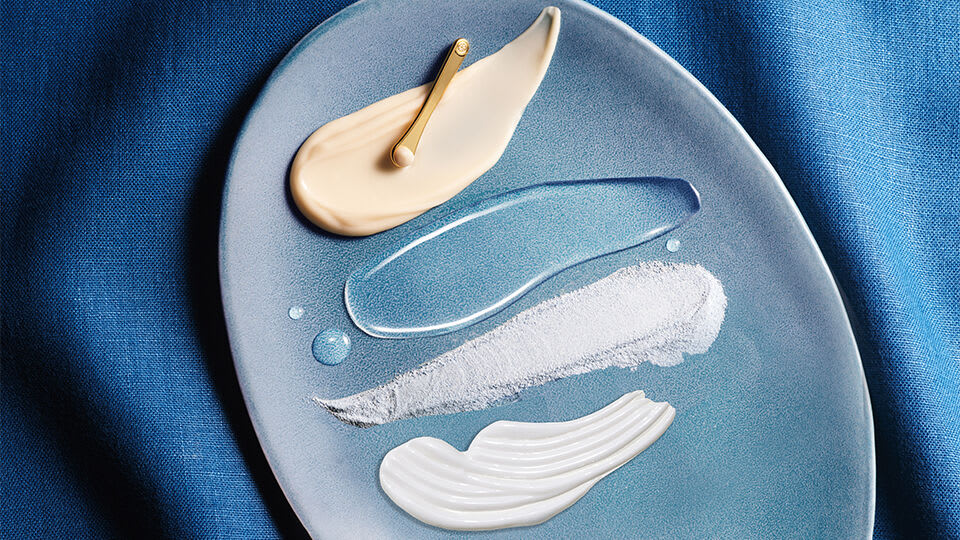The latest social media skincare trend—with the most unfortunate name in the history of trends—is deceptively simple, and could be an easy hack for all-day hydration.

Maybe you heard about it on TikTok, or from your skincare-obsessed friend. Your curiosity got the best of you, so you decided to look into it, and here you are: Wondering, what is slugging? Behold: This is everything you need to know about slugging in skincare.
What is slugging?
Slugging means applying a thin layer of petroleum jelly before bed as the last step in your nightly skincare routine. The idea may be inspired by Korean beauty rituals, and has recently gained steam on TikTok: Influencers slathering their faces in a thin layer of clear, gooey jelly. The term “slugging” refers to the mollusk, and how, when you’re slugging correctly, your skin looks to be covered entirely in a layer of slime.
Interest in slugging seemed to spike in the early months of 2022, according to Google Trends. It’s easy to fall for social media beauty trends, which seem to ignite and flame out every other day. But dermatologists and social media influencers can agree on this particular topic: Slugging is actually great for the skin. Should you decide to pick up a single TikTok beauty trend this year, it may be wise to make it this one.
What do I need to slug?
The answer to this question is deceptively simple: All you need is a good petroleum jelly, but it matters which petroleum jelly you choose.
Products made with over 30% petroleum jelly are subject to FDA regulation as over the counter drugs—and according to dermatologists, the closer a product is to 100%, the better it will be for slugging. An easy way to determine the manufacturing details of a petroleum jelly product is to look it up using a website like NDClist.com, which contains tons of helpful information on over-the-counter drugs.
What is the origin of slugging skincare?
A 2022 trend report in The Washington Post helped explain the fascinating—and centuries-old—history of the slugging trend in skincare. In a corner of Pennsylvania crammed with oil pits, Native Americans from the Seneca tribe used petroleum jelly as a skin protectant. Hundreds of years later, an American chemist visiting the same oil pits noticed oil workers applying drill residue to healing wounds.
While the term may be new, the practice is nearly ancient. Petroleum jelly’s low cost and wide availability has made it a beauty cabinet mainstay for decades. Whether applied to a cut to speed its healing process, or a patch of eczema, or, yes, all over the face while you sleep, the benefits of slugging are nearly endless. And speaking of those:
What are the benefits of slugging?
Petroleum jelly is an occlusive substance, meaning it acts like a greenhouse over the surface of your skin. An occlusive layer will help your skin retain moisture, which in turn fuels your skin’s barrier function.
In a blog post, a dermatologist at the Cleveland Clinic enumerated the benefits of slugging. In summary, slugging helps skin in three ways: By moisturizing, protecting, and repairing. In other words, it keeps necessary hydration in and keeps irritants out. Think of it as shoring up your skin barrier. You can also slug with some other skincare products in order to maximize your beauty sleep—we’ll get into those a bit later.
How do I start slugging? // What are the steps to slugging?
If you have the petroleum jelly, and the will to use it, you can start slugging tonight. Here is how your skincare routine could look with a little slugging.
Step 1. Wash your face. Slugging, like all skincare, works best on clean, dry skin.
Step 2. Apply toner or serum. If your skincare routine has a treatment step, or you have a beloved targeted serum you use before bed, now is the time to use it. (Just avoid active ingredients, like exfoliating acids or retinol.)
Step 3. Apply moisturizer. Finish with your favorite cream.
Step 4. Apply petroleum jelly. Some TikTok influencers use a lot more product than is necessary, for dramatic effect, but all you need is a dime-sized dab of jelly to get the full benefits of slugging. After moisturizer, spread your preferred petroleum jelly all over your face, to seal in your skincare.
Step 5. Wait a few minutes to set, and then go to sleep. Good night!
Is slugging right for me?
If you have oily or acne-prone skin, it might be wise to talk to your dermatologist before starting a slugging regimen. As one doctor told Marie Claire, “[Petroleum jelly] can trap oils or other comedogenic ingredients in the skin and could potentially contribute to breakouts.”
But if your skin tends toward dryness, or if you need a little extra hydration health in drier seasons or climates, slugging is an easy way to level up your current skincare routine.
What products can I slug with?
One of the best things about slugging is that it can help your other skincare products work better. In a report for CNET, one dermatologist recommended layering humectants or emollients beneath petroleum jelly to maximize your moisture. A hydrating serum can help you get the most out of your slugging routine. Super dry skin may benefit from an added emollient cream, like the ceramide-rich Tatcha Indigo Overnight Repair Serum-in-Cream.
Because slugging can send some products into overdrive, it’s best to not layer any concentrated skincare ingredients, like retinols, exfoliating acids, or anything else that might make your skin tingle, underneath petroleum jelly. And only try slugging with products you know already work for your skin. If you have any remaining questions, visit your local dermatologist—they’ll probably be happy to know you’re slugging.


